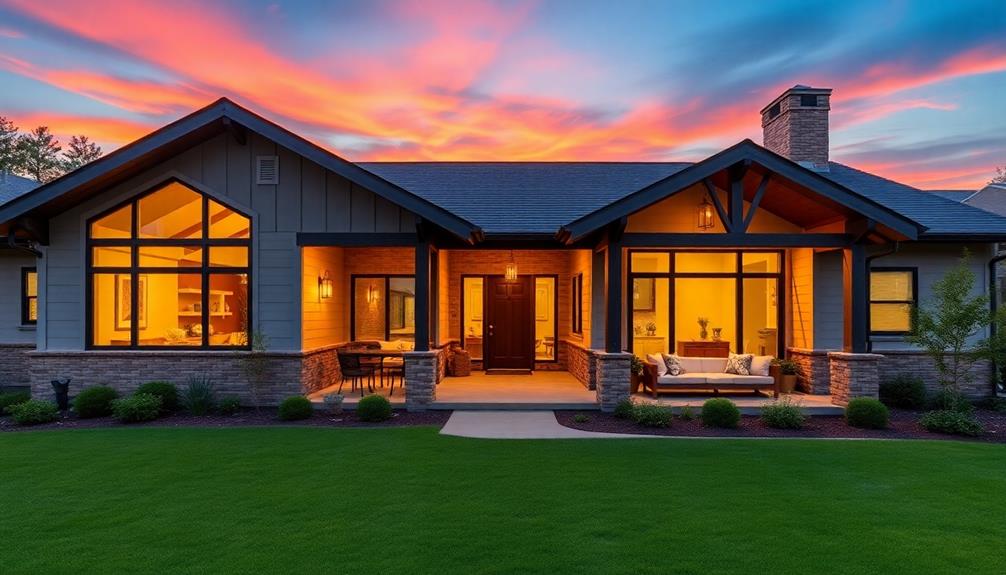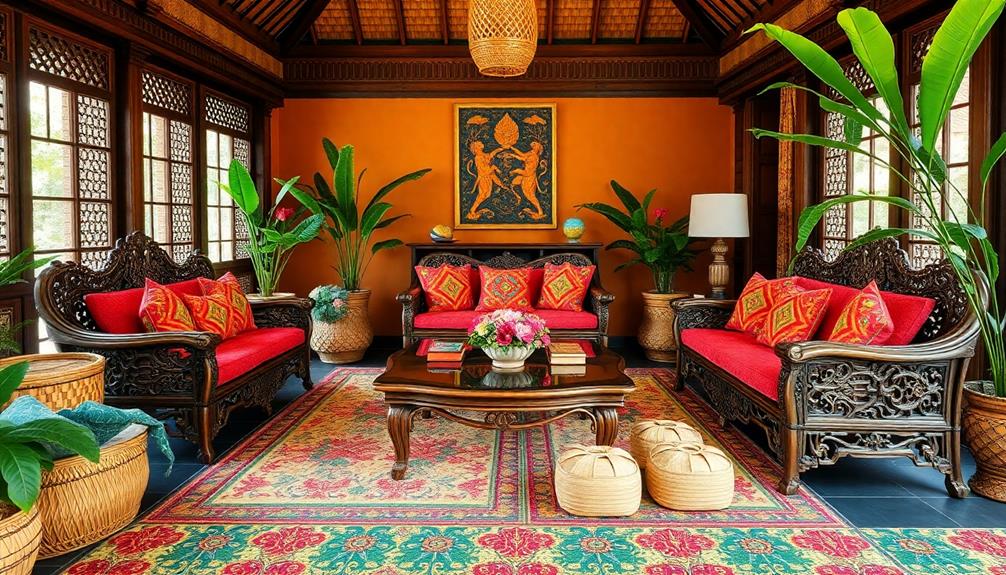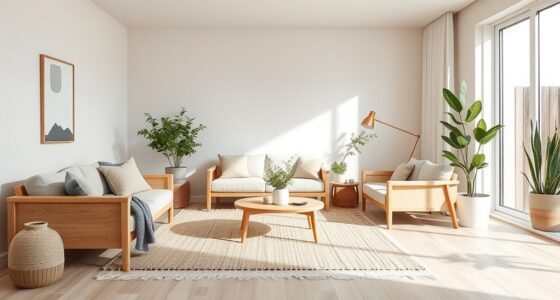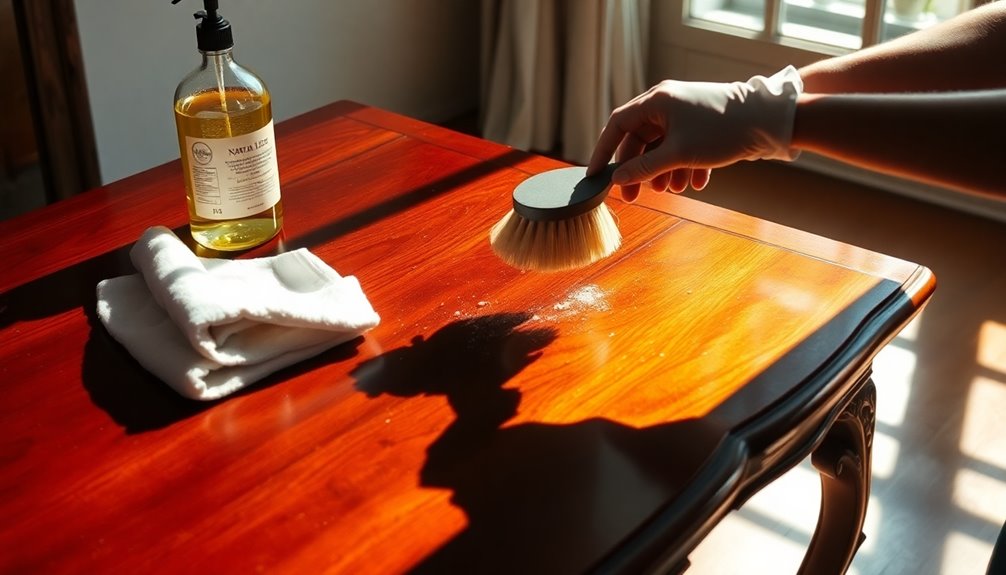You can enhance your ranch home by adding new stories, creating more space, and increasing its market value. Begin by assessing your needs – whether it’s more bedrooms, an office, or a larger kitchen. Make sure to check local height restrictions and consider the aesthetic appeal to ensure that your expansion blends seamlessly with the original structure. Obtain the necessary permits early on to avoid any delays, and hire experienced contractors to oversee your project. Remember to prioritize functionality by utilizing open floor plans and multifunctional furniture. If you’re interested in design ideas and additional practical tips, there is a wealth of information to explore on this exciting journey.
Key Takeaways
- Assess your space needs to determine the number of new stories and specific rooms required for your ranch home expansion.
- Confirm local height restrictions and building codes to ensure compliance before planning your new stories.
- Hire experienced contractors who specialize in vertical expansions to maintain quality and safety during construction.
- Consider aesthetic design styles that complement your ranch character while enhancing the overall look of your home.
- Incorporate multifunctional spaces and open floor plans in your design to maximize usability and light flow throughout the new stories.
Planning Your Ranch Home Expansion
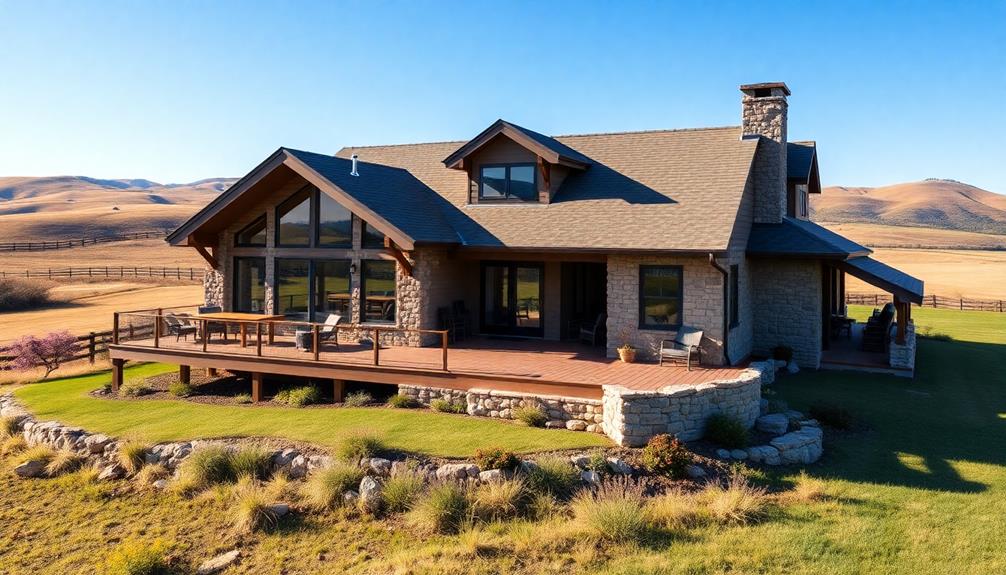
When you're considering a ranch home expansion, it's essential to evaluate your specific needs and desires to create both functional and stylish spaces.
Start by determining how much additional space you require, whether it's for extra bedrooms, a larger kitchen, or a home office.
Keep in mind that costs can range from $150,000 to $300,000, depending on the size and complexity of your project. This expansion not only serves practical purposes but can also boost your home's market value.
Before moving forward, assess the structural requirements and foundation to guarantee safety.
Finally, consider temporary housing solutions during construction to make the process smoother for you and your family.
Planning carefully now sets the stage for a successful transformation.
Design Considerations for New Stories
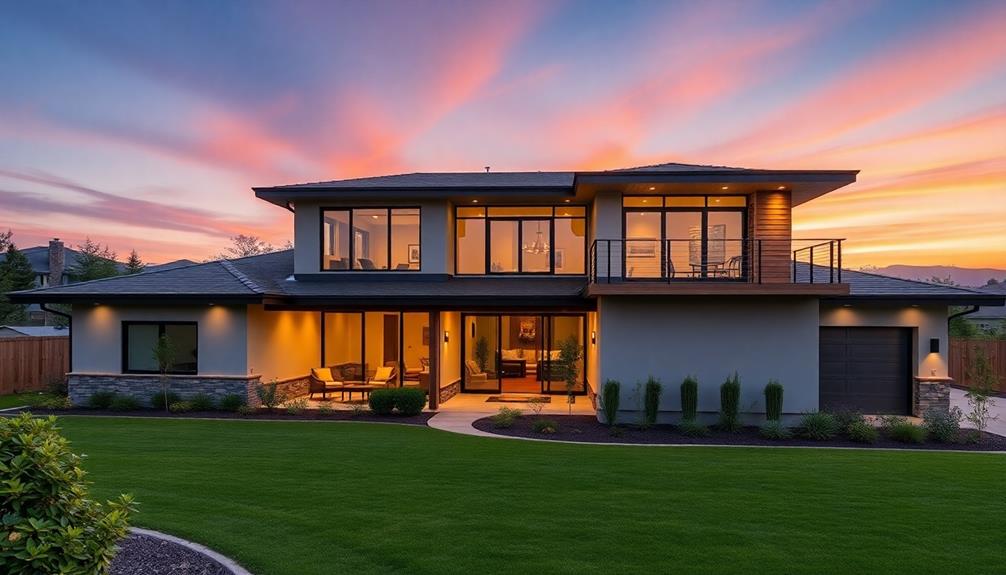
Adding new stories to your ranch home can greatly enhance its living space and overall appeal.
When considering your design, keep these key factors in mind:
- Confirm local height restrictions to guarantee compliance.
- Coordinate window designs for visual harmony throughout the structure.
- Maintain proportions and scale to avoid awkward aesthetics.
- Plan rooflines and overhangs for seamless integration with existing features.
- Guarantee sufficient natural light and ventilation in your new spaces.
Understanding Permits and Compliance
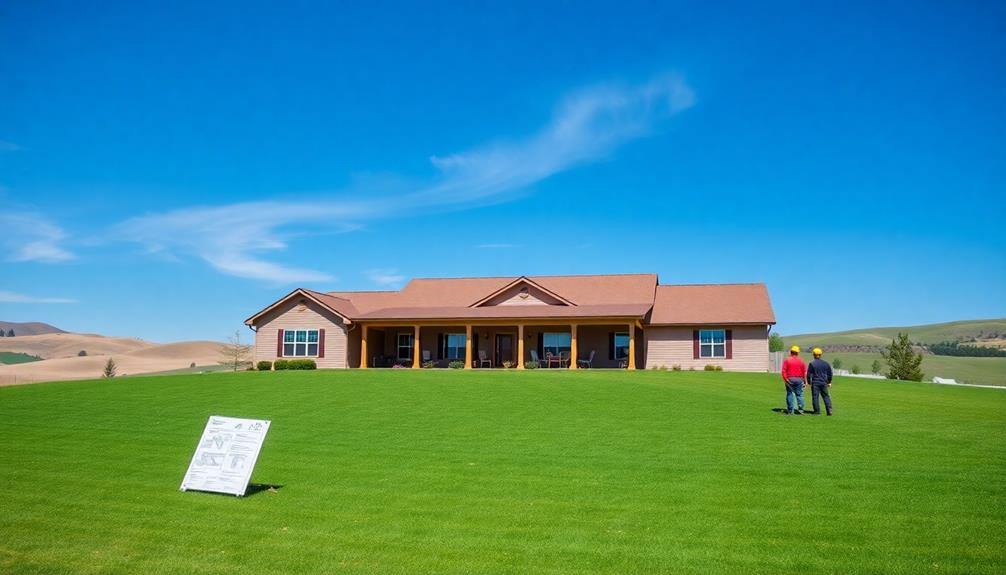
Steering through the permitting process is vital for any vertical expansion project.
You'll need to secure the necessary permits to legitimize your structural changes, which typically costs around $1,300. Each locality has specific building codes and safety regulations you must follow, so it's important to research these requirements early.
Complying with these regulations not only protects you from potential liabilities but also guarantees your project runs smoothly. Remember, permits can facilitate a compliant journey toward transforming your home.
Without them, you risk delays or even costly fines. Stay organized and keep all documentation handy to streamline the process.
Managing the Construction Process
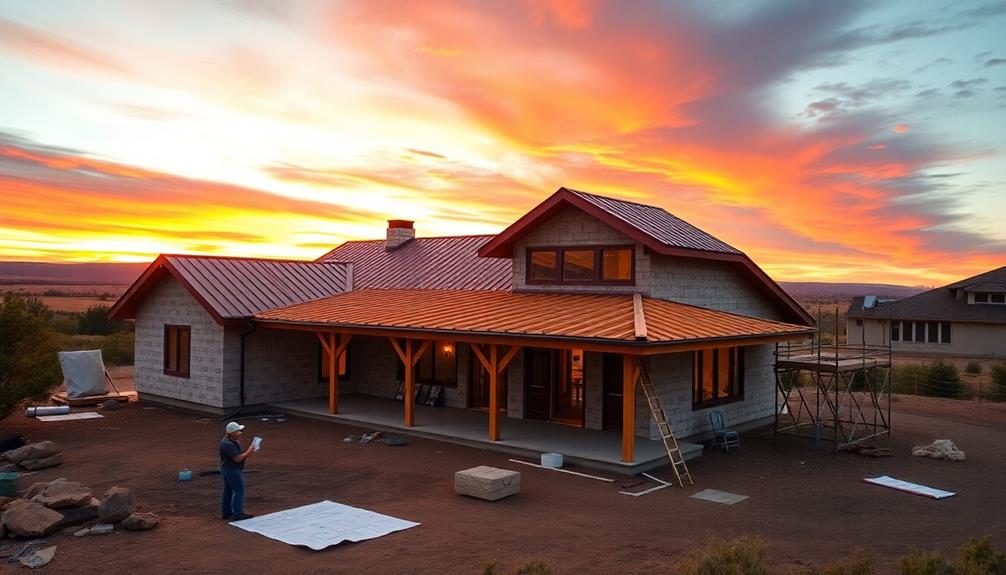
Managing the construction process for your ranch home expansion demands careful attention and planning.
To guarantee a smooth experience, you'll want to focus on several key areas:
- Conduct a thorough structural analysis and design planning before starting.
- Hire experienced contractors who specialize in vertical expansions.
- Use high-quality materials for durability and longevity.
- Implement effective project management to keep timelines and budgets on track.
- Schedule regular inspections during construction to maintain safety standards.
Choosing Aesthetic Design Styles

When it comes to choosing aesthetic design styles for your ranch home expansion, you'll find that two popular options stand out: traditional and classic designs.
Traditional design embraces bold colors and intricate patterns, creating a warm and inviting atmosphere. You'll love how solid wood materials and comfort-enhancing fabrics contribute to its charm, especially when incorporating elements like natural materials to enhance the overall look.
On the other hand, classic design favors soft, subdued colors, promoting an elegant and serene environment. It emphasizes neutral hues and traditional furniture pieces, showcasing fine craftsmanship.
When selecting your style, consider how each option reflects your personality and complements your existing home. Balancing these designs with your ranch's character can elevate your space, making it functional while showcasing your unique taste.
Enhancing Curb Appeal
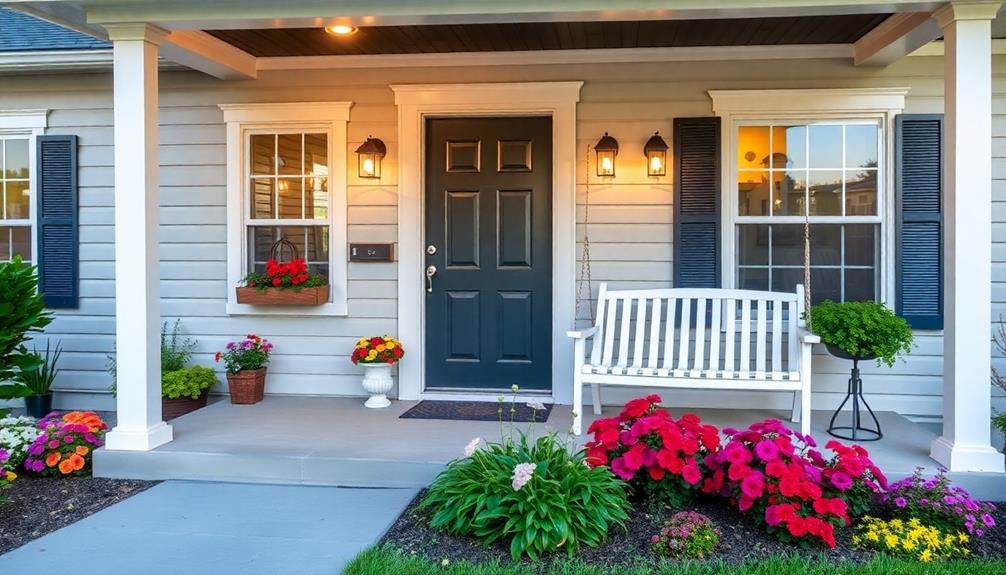
To enhance your ranch home's curb appeal, focus on elements that create a welcoming and attractive exterior.
Start with simple changes that make a big impact. Reflect on incorporating unique camping experiences that reflect the beauty of nature in your landscaping.
Here are some ideas to reflect on:
- Fresh Landscaping: Plant colorful flowers and maintain your lawn for a vibrant look.
- Stylish Front Door: Upgrade to a bold, modern door that draws attention.
- Outdoor Lighting: Install tasteful lighting to illuminate pathways and highlight features.
- Clean Gutters and Siding: Regularly clean your home's exterior to keep it looking fresh.
- Decorative Accents: Add house numbers, a new mailbox, or seasonal decorations for personality.
Maximizing Space and Functionality
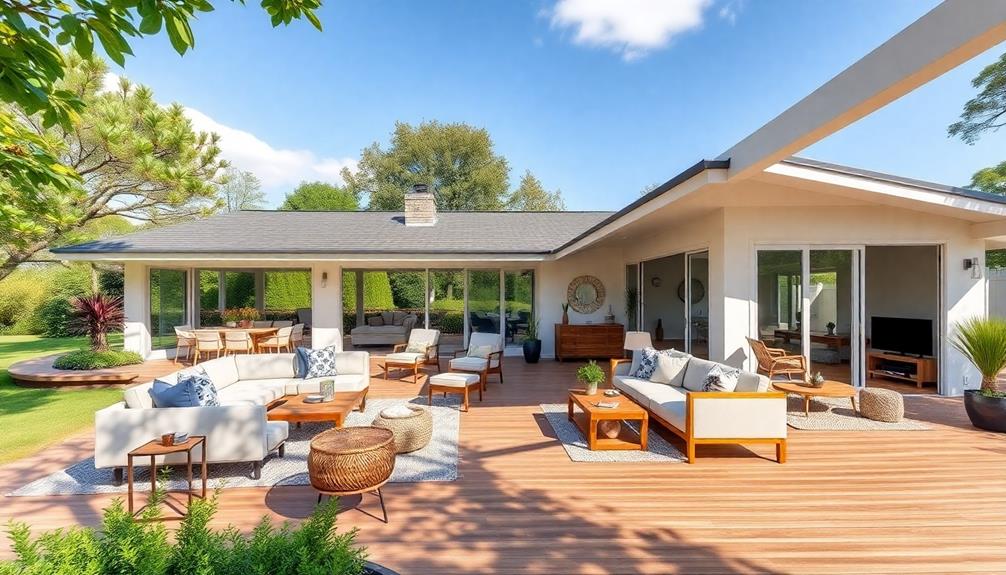
In a ranch home, making the most of your space often involves creative solutions that enhance both functionality and flow.
Consider multifunctional furniture, like a sofa bed or storage ottomans, to maximize usability without cluttering your living area. Open floor plans can create a sense of spaciousness, allowing natural light to flow freely. Incorporating wall-mounted shelves and foldable tables can also help optimize space while maintaining a clean and organized look. When upgrading, it’s important to consider **how to dispose of old furniture** responsibly, whether through donating, recycling, or selling. This not only reduces waste but also gives your old pieces a chance to be reused by others. Additionally, maintaining your furniture is essential to prolong its lifespan. For instance, regularly cleaning and removing stains from a fabric sofa helps keep it looking fresh and extends its usability. By investing time in care and thoughtful upgrades, you can create a functional yet visually appealing living space that aligns with both sustainability and style.
Use vertical storage options, such as wall shelves or tall cabinets, to free up floor space while keeping essentials within reach. If you're expanding, think about incorporating built-in features, like window seats or nooks, that serve both aesthetic and practical purposes.
Frequently Asked Questions
How Does a Second Story Affect My Home's Insurance Rates?
A second story can increase your home's insurance rates due to higher reconstruction costs and added risks. It's crucial to inform your insurer about changes, ensuring you have adequate coverage for your expanded living space.
What Are the Best Landscaping Options Post-Expansion?
After your expansion, consider native plants for low maintenance, ornamental trees for shade, and vibrant flower beds for color. Incorporating pathways for accessibility and outdoor seating for relaxation will enhance your landscape beautifully.
How Do I Choose the Right Contractor for My Project?
To choose the right contractor for your project, assess their experience, check references, and review past work. Ascertain they understand your vision and can communicate clearly. Don't hesitate to ask questions about timelines and materials.
Can I Live in My Home During the Construction?
While your home's getting a facelift, you can certainly stay, but expect a bit of chaos. Embrace the temporary disruption, and prepare for some adjustments as skilled hands work to transform your space beautifully.
What Are Common Mistakes to Avoid During Vertical Expansion?
When expanding vertically, avoid underestimating costs and neglecting permits. Don't ignore structural assessments or hire inexperienced contractors. It's essential to plan for natural light and guarantee design harmony to prevent future complications.
Conclusion
Elevating your ranch home can greatly boost its value—up to 20% in some cases! By thoughtfully planning your expansion, you not only enhance your living space but also invest in your property's future. Embrace the design possibilities and guarantee your new stories harmonize with your existing structure. With the right approach, your home can become a stylish and functional haven that meets your needs and reflects your personal style. Get started on your exciting transformation today! Don’t forget, even small details like lighting, color schemes, and materials play a huge role in creating a cohesive look throughout your newly elevated space. By incorporating modern textures and finishes, you can ensure a seamless blend between old and new. Transform your home decor today and create a space that not only enhances your lifestyle but also leaves a lasting impression on all who enter.
